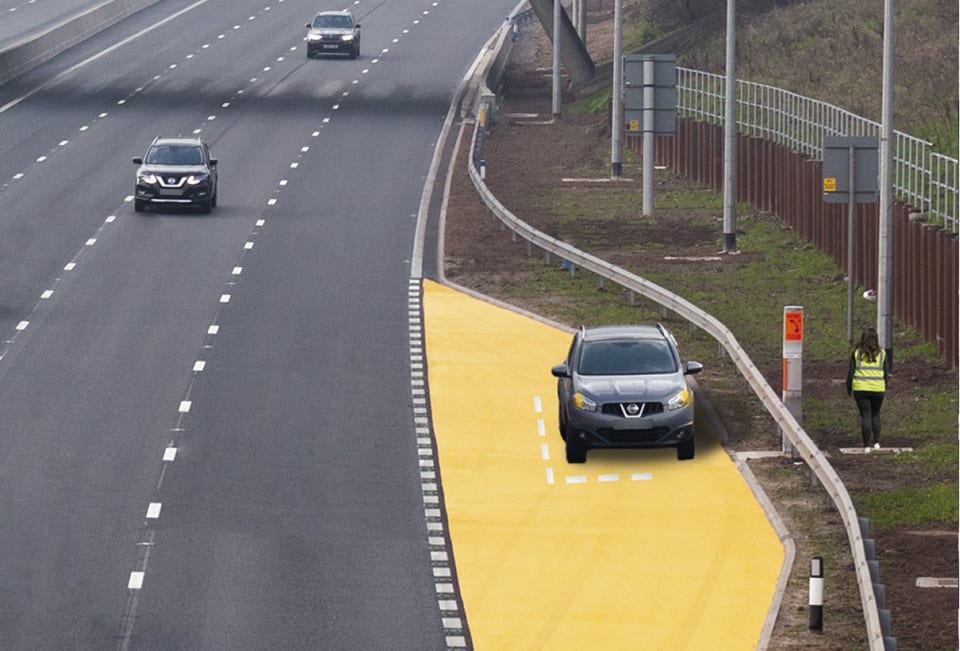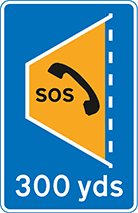The DVSA has introduced two new rules to the Highway Code and 33 updates to existing rules. These include updated guidance on safety-related issues including driving while tired, unroadworthy vehicles, safe towing, tailgating, and driving in roadworks.
The two new rules are:
Motorways / Stopping: New Rule 270 (main points)
- Emergency areas are located along motorways with no hard shoulder or where the hard shoulder can be used as an extra lane.
- These MUST only be used in an emergency.
- The emergency areas are marked by blue signs with an orange SOS telephone symbol and may have orange surfacing.
New images have also been introduced into the Highway Code to help motorists identify emergency areas/signs:
 Emergency area
Emergency area

Sign indicating distance to next emergency area
Breakdowns & Incidents: New Rule 275 (main points)
- Try to stop your vehicle in a place of relative safety if you breakdown or are in an incident.
- A place of relative safety is where you, your passengers and your vehicle are less likely to be put in danger from passing traffic.
- If you’re on a motorway or other high-speed road, the safest place to stop is a service area.
- Also consider using lay-bys, emergency areas (see above) and hard shoulders.
- Hard shoulders are the least preferable option as you end up very close to high-speed traffic.
- Be sure to keep yourself and any passengers well away from your vehicle and moving traffic; if your vehicle is hit, you and/or your passengers could be injured or worse if you’re standing too close.
The small (but just as important) rule changes
The 33 updates are changes and additions to existing rules. Here is a sample of one of the rules – Rule 283 – with changed lines only plus changed/additional wording in bold:
Incidents: Rule 283
If you are involved in an incident or collision or stop to give assistance:
- If possible, stop in a place of relative safety (see Rule 275)
- Ask drivers and passengers to stop smoking
- Contact the emergency services on 999
- DO NOT move injured people from their vehicles unless they are in immediate danger.
- DO NOT remove a motorcyclist’s helmet unless it is essential and you are trained to do so
- Be prepared to exchange details.
– For a full breakdown of the additions/changes to existing rules, head here
What the rules mean for you
“The new edition of the Highway Code can give everyone on our roads the confidence that they have the knowledge and skills to safely get from A to B.”
• Jeremy Phillips, Head of Road Safety, National Highways
The new rules and additions are now live and can be expected to appear during your theory test. We are currently adding them to Theory Test Pro and, as soon as they become available, we’ll let you know so you can start practising.
Know Your Code
 Double your chances of theory test success with Theory Test Pro. Sign up for free here.
Double your chances of theory test success with Theory Test Pro. Sign up for free here.

